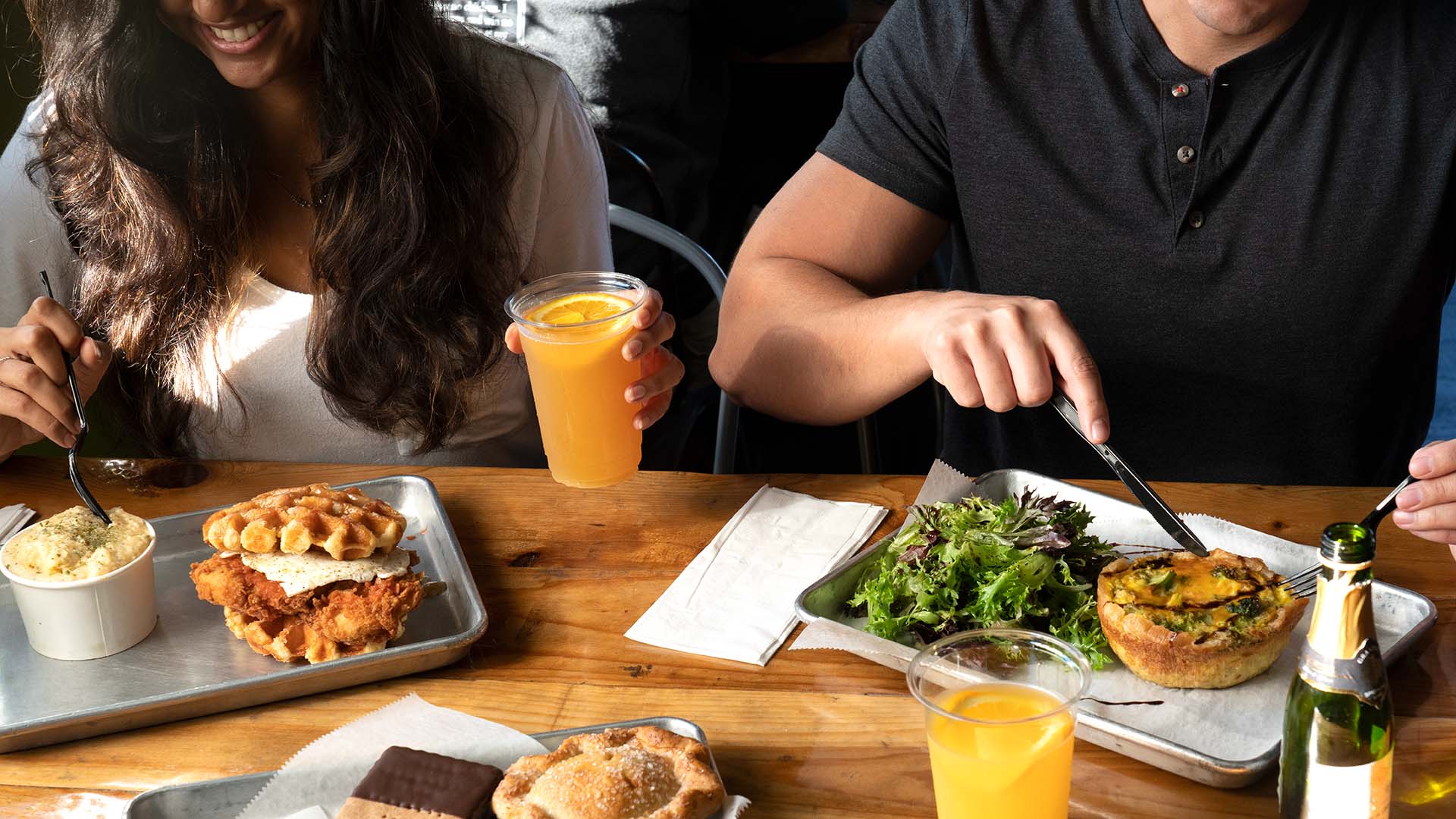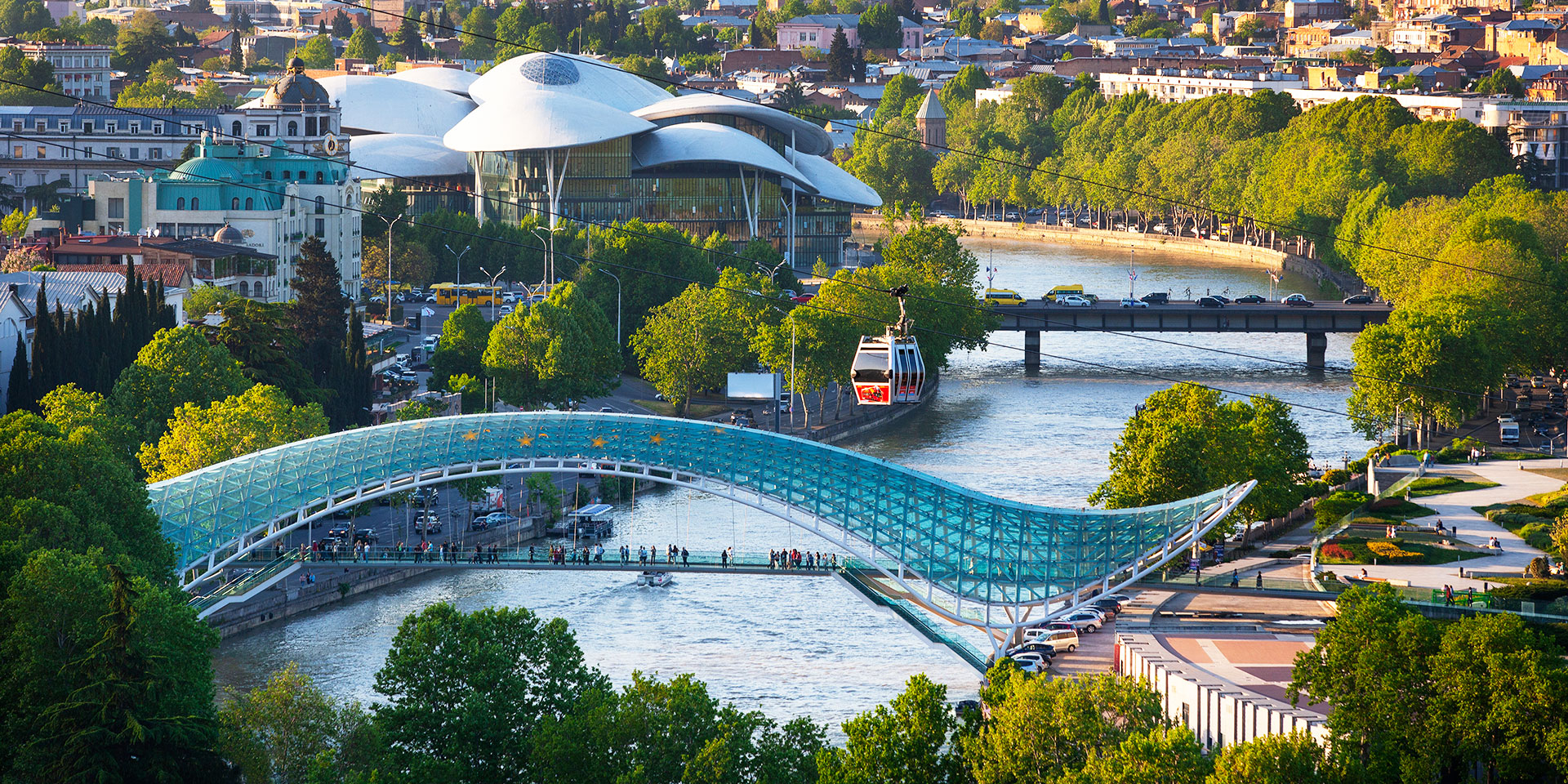
Connecting the banks of the Mtkvari River that divides Tbilisi is a modernistic, glass-roofed pedestrian bridge. (Photo: Getty Images)
Tips + Trends9 Reasons Why (European) Georgia Should Be On Your Mind
By Tyler SchoeberFew Americans have traveled to Georgia, the Eastern European nation lying between the Caspian and Black Seas in the shadow of the Caucasus Mountains. It’s a visually stunning land whose food and wine scene is fast becoming legendary among culinary-curious travelers.
The tourism infrastructure of this former Soviet republic is still developing, and Georgia’s doors are opening wide, especially for those who love wine, rate dining as a key attraction in their travels, or simply want to be first among their friends to visit what may be the next hottest destination.
The Architectural Curiosities of Tbilisi, Georgia’s Capital
The fun-to-pronounce Tbilisi (teh-bih-LEE-see) is a leafy city with a curious mix of ancient and cutting-edge buildings spread along a narrow river valley.
The overall tableau is best viewed from the hilltop observation deck next to the patriotic 60-foot-tall statue of Mother Georgia, a stern-looking female figure in traditional dress visible from almost everywhere in town.
Spread directly below are the winding lanes and red-clay roofs of Old Town (be sure to stroll along Erekle II, a pedestrian street lined with bars and restaurants) and the venerable Bath District, built on the sulfur-fumed hot springs where the city was founded in the 5th century. (Not surprisingly, Tbilisi means “warm place” in Georgian.)
Connecting the banks of the Mtkvari River that divides the city is a modernistic, sinuous, glass-roofed pedestrian bridge that leads to two bizarre, horizontal tubes designed to be a cultural center and the presidential palace, an almost comically gaudy take on the U.S. capitol in Washington, D.C. Wherever you look in Tbilisi, you won’t be bored.
The Ethnographic Museum – Life Before the Soviets
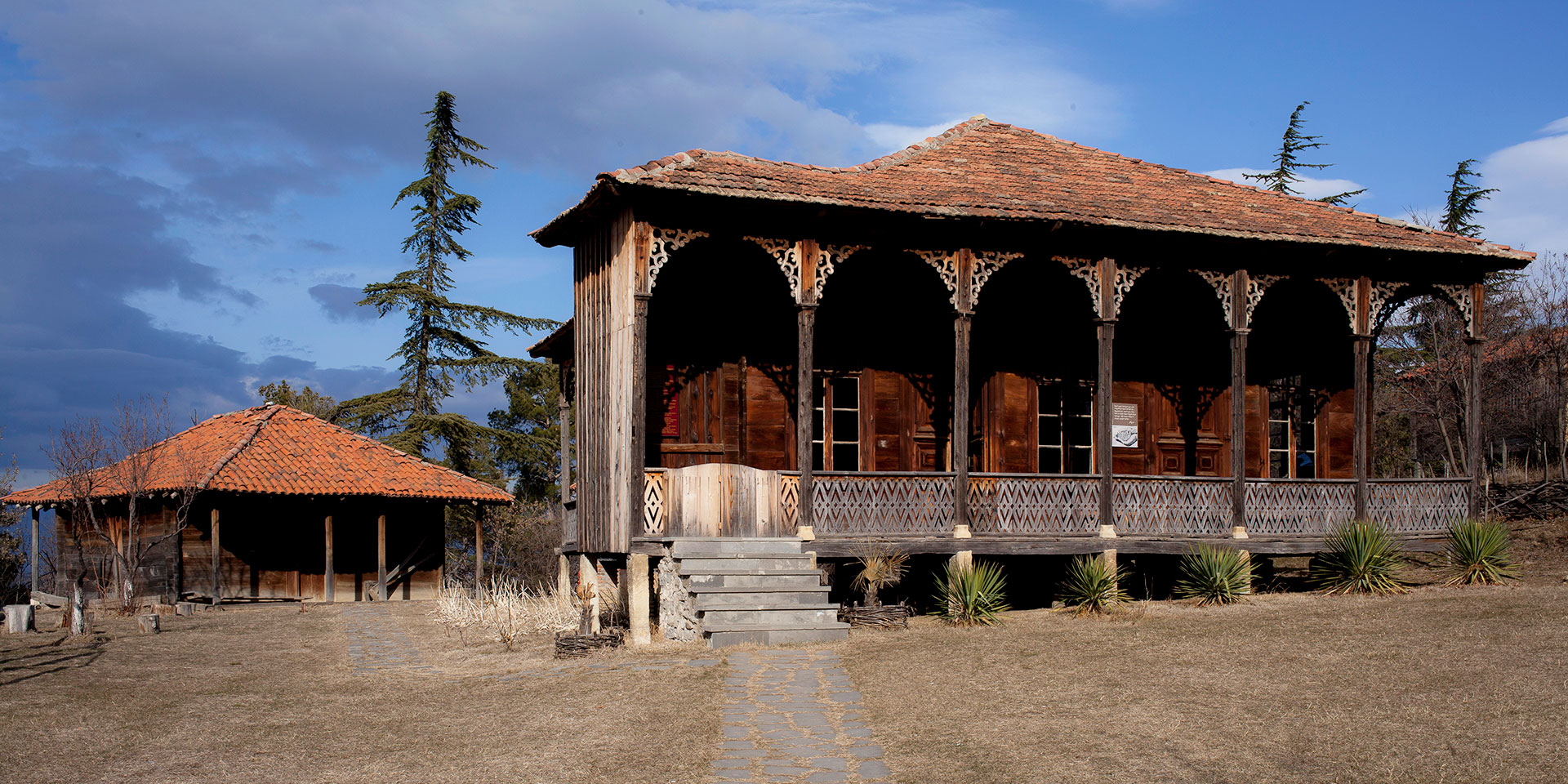
To get a better sense of Georgia before the tumultuous 20th century (including Communist domination, mafia violence, and rampant political corruption), the Open Air Museum of Ethnography, a 20-minute drive from central Tbilisi, is a must-see.
Historic and traditional structures from around the nation have been taken apart and reassembled here for a history lesson in Georgian authenticity. A 170-year-old house from Balexi in eastern Georgia is built entirely of chestnut. Elsewhere sits in an outbuilding that served as a family’s kitchen and gathering place–as well as a barn for their three or four cows.
In a wooden workhouse/storehouse, traditional instruments used in grape harvesting and winemaking are on display, including a grape-crushing trough made from a single, hollowed-out tree. Costumed docents, food demonstrations, and a scenic mountain setting round out the attraction.
The Bodbiskhevi Bazaar Sunday Market
The Kakhethi Valley in Georgia’s far east is the nation’s breadbasket (or, at least, one of several), and a day-trip to the vast, outdoor market there called the Bodbiskhevi Bazaar, in the town of Tsnori, will show you why.
Live turkeys and mountains of potatoes, butchers carving meats of all sorts, cheesemongers, fruit vendors, and purveyors of nuts, spices, odd-looking vegetables, and more in a cacophonous, almost bewildering market covering acres will blow your mind.
It’s so big that buyers from the nearby country of Azerbaijan frequently cross the border to take advantage of the bounty. The market provides an unvarnished picture of daily life in the Georgian countryside, and shouldn’t be missed.
The Ancient Cuisine
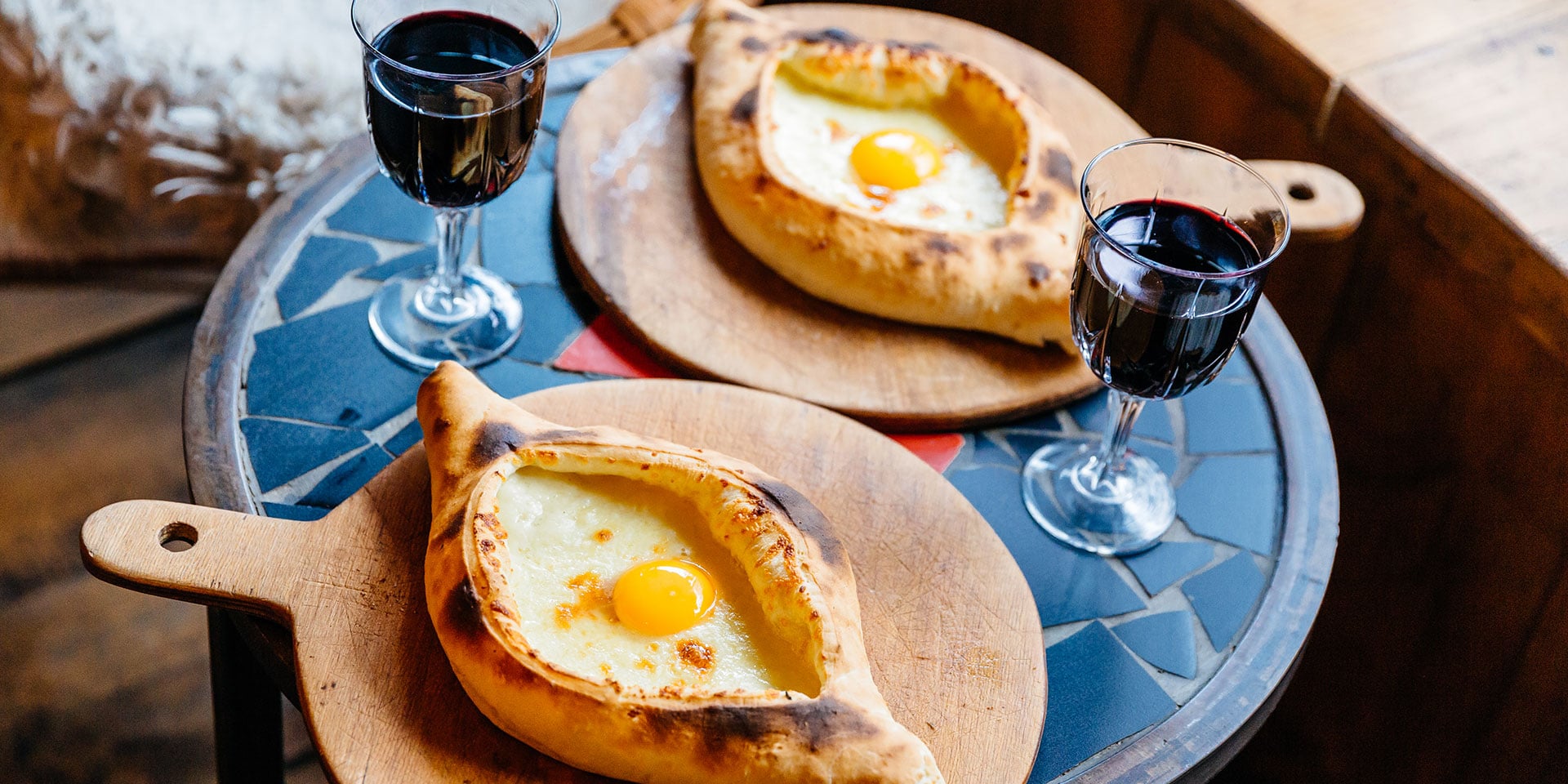
The prevalence of exotic seasonings in Georgian cooking comes as no surprise once you learn that the country is on the historic Spice Route, where Asia meets Europe. Blue fenugreek, crushed marigold, dried barberries, and the like flavor nearly every dish.
Probably nothing speaks to Georgia’s culinary heritage more than khachapuri—baked bread filled with cheese or eggs or meats. Juicy pork-and-beef kinkhali soup-filled dumplings are as common as they are memorable (and messy!).
Also on the table are lobio (Georgia’s national dish, spicy red beans, walnuts, and onions served in a clay pot), cornbread spread with salty sheep’s cheese, aubergine slow-cooked in spices, and green pickles with jonjoli (the pickled flowers of the eponymous tree, unique to Georgia). Most dishes, from appetizers to mains, are served on 10-inch plates, a Georgian tradition.
Sighnaghi, the City of Love
Sighnaghi is one of the most picturesque mountain towns you’ll ever find, full of churches, spires, ancient towers, cobbled streets, and stone archways running along the spine of a mountain high above the Kakhethi Valley. The panorama is impressive, even heart-stopping on clear days when the snow-capped Caucasus range is in view.
Known as the City of Love (because supposedly you can get married in the main square 24/7), it’s also home to two of the country’s celebrated restaurants, Pheasant’s Tears, housed in a 300-year-old building. Try the water buffalo cheese with yogurt and cheese curds; the boiled aubergine on a ragu of potato, white cheese, butter and caramelized onions, and pork in white wine with pomegranate.
Also plan a meal at Okro and order red peppers stuffed with spicy walnut paste, cubed veal and fresh herbs. The restaurant’s balcony may well have the best views in a town famous for its vistas.
Both restaurants are owned by wineries, so your server’s recommendations for local vintages are almost certain to be knowledgeable.
Ancient Wine Culture
Recent scientific research documents Georgia as having the world’s oldest wine-making culture — more than 8,000 years old.
The tradition was nearly ruined by 70 years of Soviet occupation (and a Russian fondness for bulk semi-sweet wines), but since Georgia declared independence in 1991 the old traditions have been returning, including making natural wines in gigantic amphoras called qvevri (kway-vree) that are buried below ground to let the wine ferment.
“Natural wines have a free spirit about them,” says Carla Capalbo, author of Tasting Georgia. “They don’t have additives. You can drink them and feel great the next morning.”
Besides producing a slew of red and white varieties, Georgian wine-makers are also known for their “orange” wines made from crushed green grapes with the skins left on for a time during fermentation.
The Caucasus Mountains
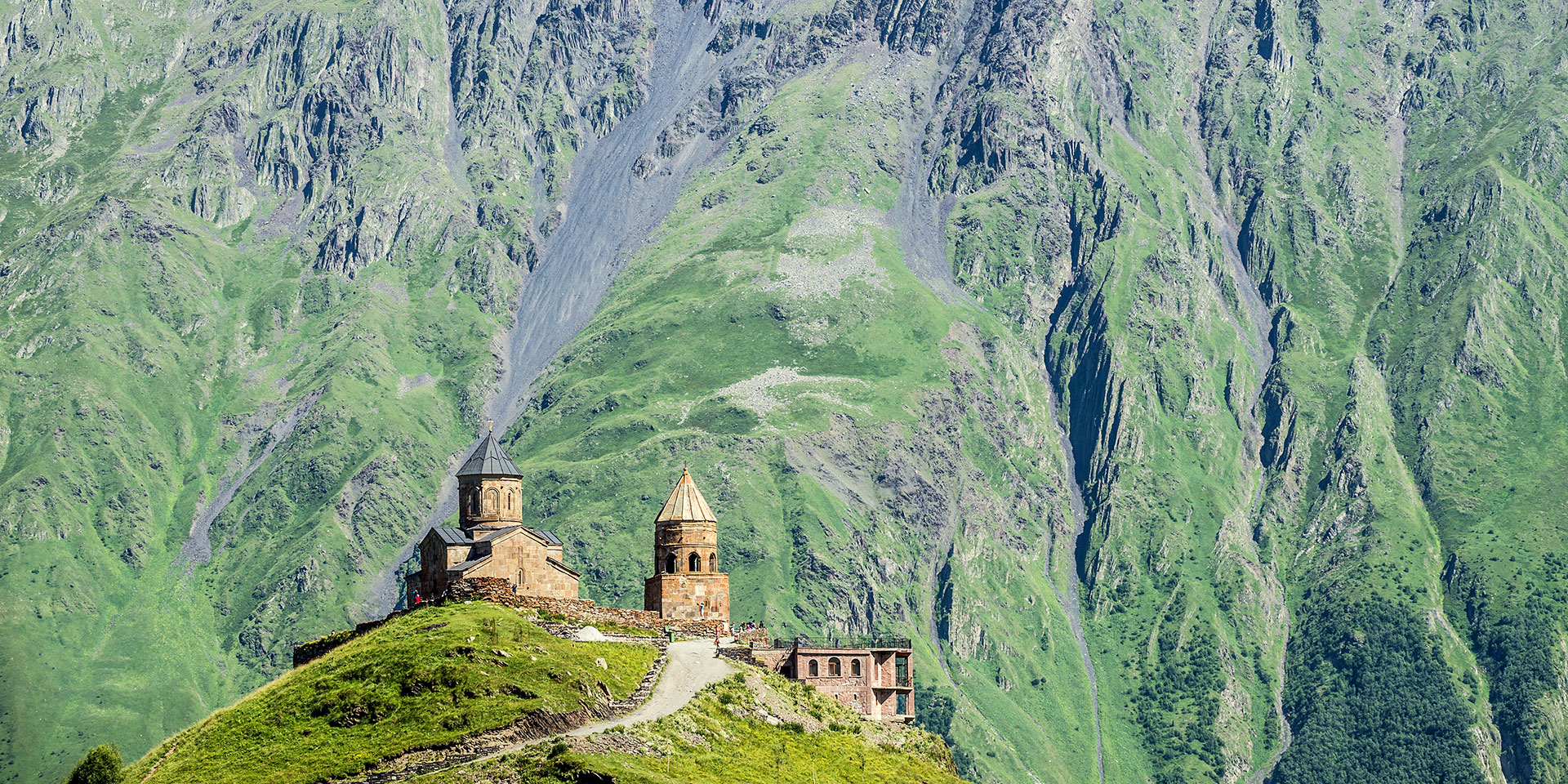
Stretching across Georgia’s northern frontier with Russia, the rough-hewn peaks of the Caucasus range are not only beautiful, they literally create a climate in Georgia that you’d expect in the Mediterranean. The best view? Mount Kazbek, as seen from Stepantsminda — a perspective that will stay in your memory for years.
The only way in or out of Stepantsminda by car is via the Georgian Military Highway, an age-old thoroughfare improved by the Russians to withstand the harshest of winters (roofed sections protect vehicles from landslides and avalanches) and lined with timeworn watchtowers and atmospheric monasteries.
The massive Russia-Georgia Friendship Monument, whose mosaics depict scenes from both countries’ history, is a convenient stopping point overlooking the jaw-dropping view of Devil’s Valley.
Bodbe Monastery and the Foundation of Christianity
The 9th-century church at Bodbe Monastery houses the tomb of Saint Nino, the Syrian woman who brought Christianity to Georgia in the 4th century (Georgia was the second nation to adopt Christianity, after Armenia).
The smoke from the incense, the peeling frescoes, the cathedral light streaming through the windows, the crowds paying homage — the ancient vibe will make you forget what century you’re living in. Saint Nino is best recognized in icons by her cross, made of grapevines with its crossbeams pointing downward.
The Supra Feast
A traditional Georgian feast is called a supra — and absolutely shouldn’t be missed if you’re invited. Imagine the longest, most laid-back Thanksgiving meal you’ve ever had, except with better cooking, more wine, and no cranky uncles arguing politics. That’s a traditional supra.
The meal is led by a host, called a tamada, who makes the toasts and directs the table’s conversation.
“While the toast is going on, you don’t drink, but wait until the tamadadrinks. You don’t toast. The tamada does it. It’s a skilled art,” says Tasting Georgia author Carla Capalbo.
Expect your tamada to raise a glass to diversity, another glass to friendship, another glass to world peace. But don’t forget to pay attention to the constantly flowing dishes — grape leaves stuffed with sausage cooked in red wine over lentils cooked in white wine, beef meatballs with a tangy tomato sauce and fresh cilantro, pork stew with dried plums and fresh plums, and other only-in-Georgia dishes.
Not a bad way to start — or finish — an exploration of this ancient but up-and-coming land.
This article was published through a partnership with Jetsetter magazine. Read the original story: 9 Reasons Why (European) Georgia Should Be On Your Mind by Tyler Schoeber, a regular contributor to Jetsetter.





